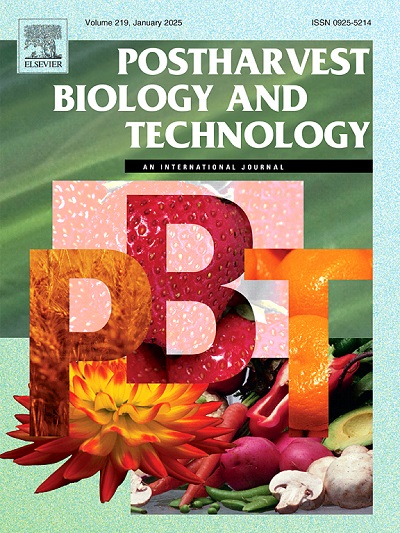Effect of spermidine on the quality of vase-inserted Paeonia suffruticosa ‘Luoyang Hong’
IF 6.4
1区 农林科学
Q1 AGRONOMY
引用次数: 0
Abstract
Vase-inserted cut tree peony flowers have a short viewing period and research focusing on prolonging the flowering duration is limited. This study investigated the effects of spermidine (Spd) on tree peony cut flowers inserted in vases containing different concentrations of Spd solutions. Paeonia suffruticosa ‘Luoyang Hong’ cut flowers at the full blooming stage were used as the test material, and floral aroma, phenotypic characteristics, and physiological indices were selected as the evaluation indicators. The results indicated that a concentration of 400 μmol·L−1 Spd significantly increased the contents of terpenoids, ketones, and alcohols, while 5 μmol·L−1 Spd significantly elevated the levels of hydrocarbons and benzene. The aldehyde content in the vase-inserted tree peony cut flowers was significantly enhanced after the addition of 300 μmol·L−1 Spd. Moreover, 5 μmol·L−1 Spd significantly improved the fresh weight, flower diameter, and flower height, prolonged the flowering period, increased the superoxide dismutase, peroxidase activities, and soluble protein content, and decreased the activities of ACC oxidase, ACC synthetase, and malondialdehyde (MDA). In conclusion, the addition of 5 μmol·L−1 Spd effectively enhanced the contents of floral phenylcyclic compounds, maintained the ornamental quality, and delayed the senescence of vase-inserted cut tree peony flowers.
求助全文
约1分钟内获得全文
求助全文
来源期刊

Postharvest Biology and Technology
农林科学-农艺学
CiteScore
12.00
自引率
11.40%
发文量
309
审稿时长
38 days
期刊介绍:
The journal is devoted exclusively to the publication of original papers, review articles and frontiers articles on biological and technological postharvest research. This includes the areas of postharvest storage, treatments and underpinning mechanisms, quality evaluation, packaging, handling and distribution of fresh horticultural crops including fruit, vegetables, flowers and nuts, but excluding grains, seeds and forages.
Papers reporting novel insights from fundamental and interdisciplinary research will be particularly encouraged. These disciplines include systems biology, bioinformatics, entomology, plant physiology, plant pathology, (bio)chemistry, engineering, modelling, and technologies for nondestructive testing.
Manuscripts on fresh food crops that will be further processed after postharvest storage, or on food processes beyond refrigeration, packaging and minimal processing will not be considered.
 求助内容:
求助内容: 应助结果提醒方式:
应助结果提醒方式:


